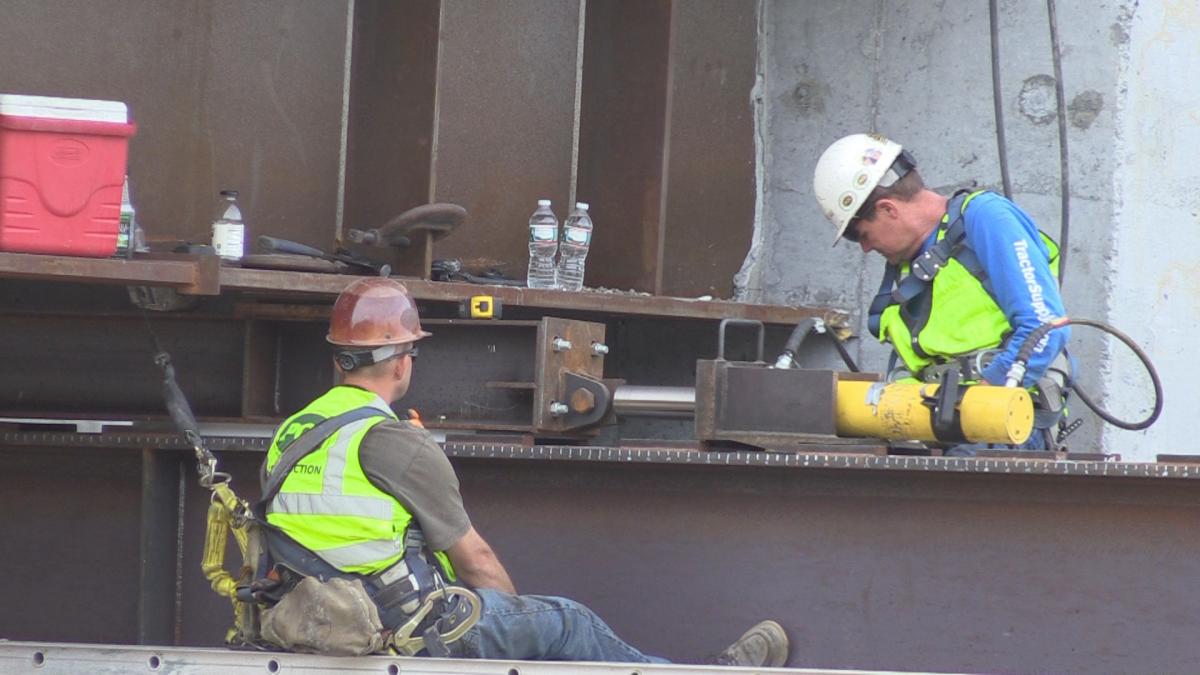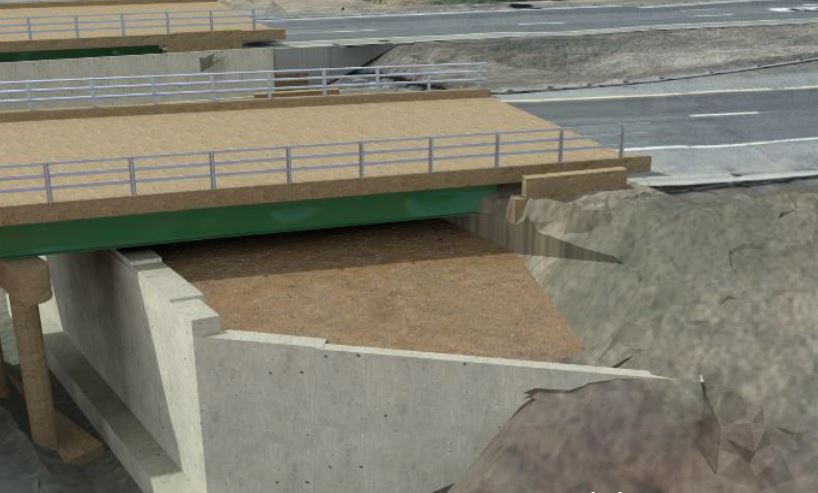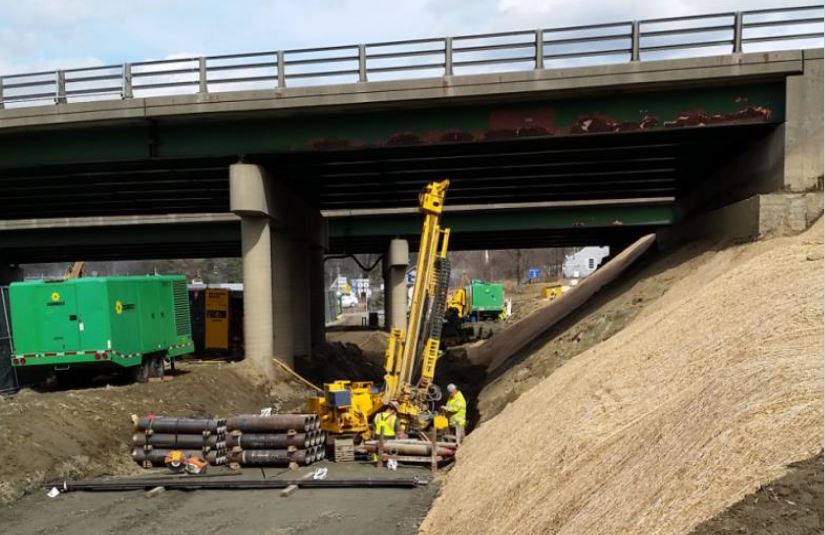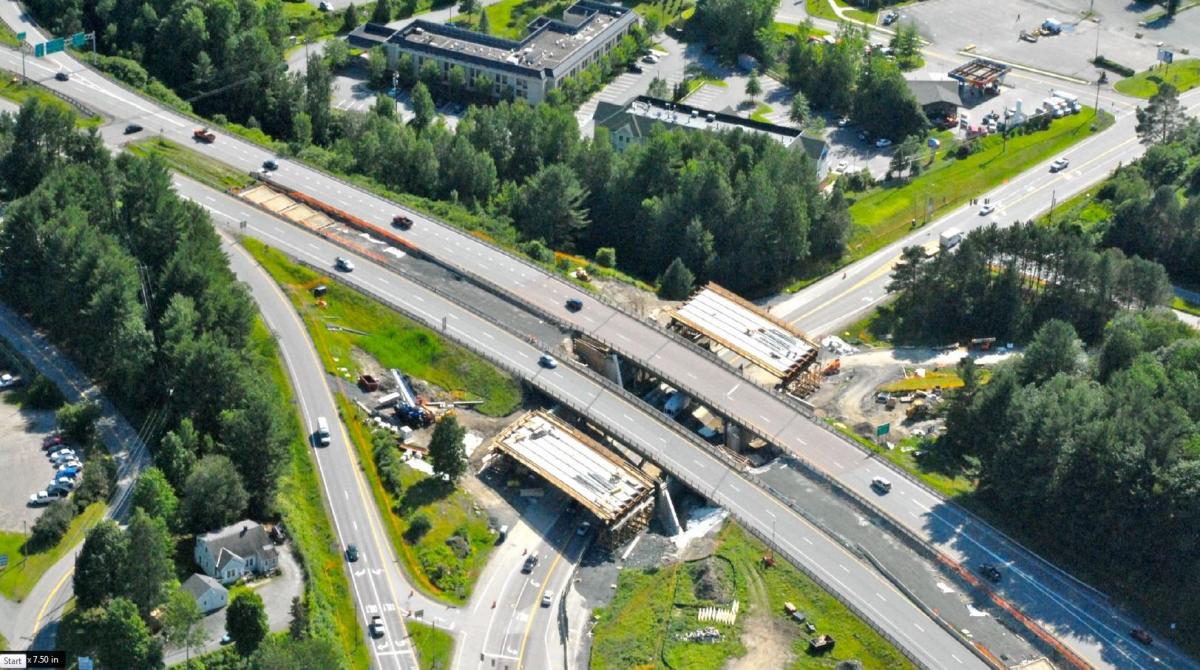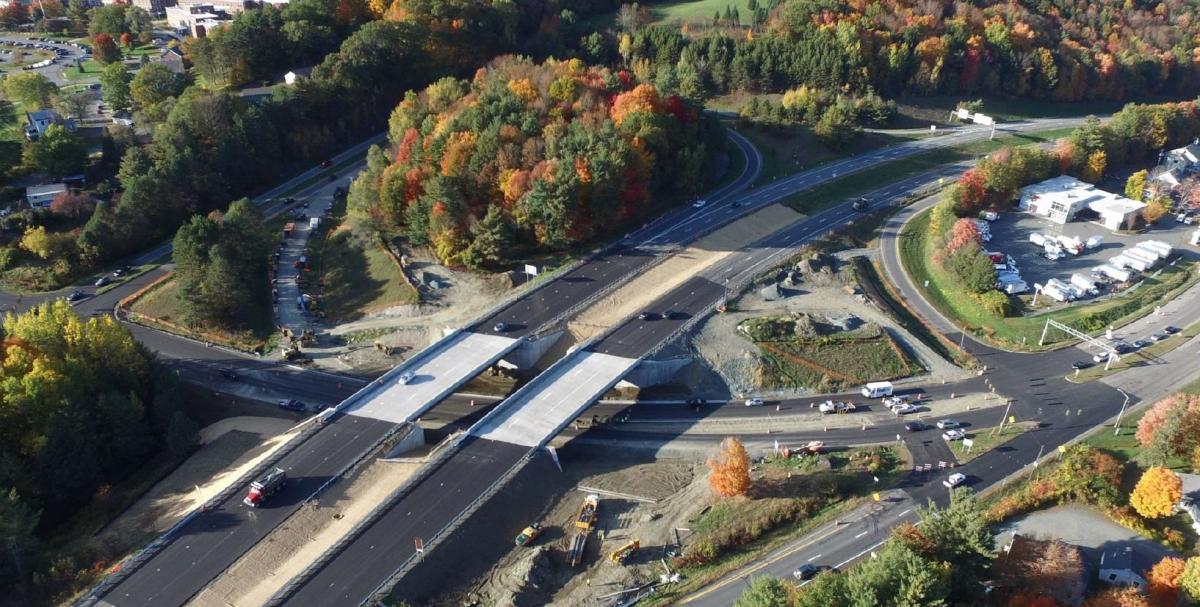Ultra High Performance Concrete
Ultra High Performance Concrete (UHPC) is a relatively new concrete product. Compressive strength can range from 18 to 35 KSI with a sustained tensile strength of 0.9 – 1.5 KSI. Currently the product is proprietary and must be mixed on site and is extremely self-consolidating.
The mixers used to make UHPC are special shear mixers. A cement mix is combined with water to a certain consistency, and then the steel fibers are added. While forming, an over-pour needs to be included and the pour must be formed over. Every 20’ a bucket should be screwed to the forms and a hole cut through the bottom of the bucket and form. The bucket is to be filled partially with concrete to maintain pressure and prevent voids.
Shear mixer and bags of cement mix to be combined with water
Benefits to VTrans
- Higher Compressive Strength: UHPC compressive resistance is 6 to 8 times greater than conventional concrete reducing the length of reinforcing lap lengths, and the size of closure pours required during construction.
- Higher Tensile Strength & Ductility: UHPC contains metal fibers that make it ductile. With a strength 10 times higher than traditional concretes, it can resist bending and can withstand major transformations (such as pressure or dilation) without breaking. Sources of the steel fibers are available in the U.S.
- Increased Durability & Long Term Stability: With UHPC’s resistance to external aggressions such as abrasion, pollution, weathering and scratching, its longevity is 2 to 3 times longer than that of conventional concrete.
Slide-In Bridge Construction Project
The Vermont Agency of Transportation replaced two highway bridges over US Route 5 on Interstate 91 at exit 11 in White River Junction, approximately one half mile north of the junction of Interstate 91 and Interstate 89. The bridge replacement was fast-tracked through the Accelerated Bridge Program (ABP).
Slide-in Bridge Construction (SIBC) was used to replace the Interstate 91 Hartford Bridges for the first time in Vermont. The slide took place over two weekends, one for each bridge. Road closures on Interstate 91 was limited to these two weekends, minimizing inconvenience to travelers.
Here’s how SIBC Worked:
1: Building the foundation
- A new Foundation was built for each bridge underneath the existing bridges.
2: Building the new bridges
- Both new bridges were constructed adjacent to the existing bridges on Temporary supports
3: Moving the new bridges into place
- The old bridges were demolished and the new bridges were moved into place over one weekend for each bridge
- One side of the highway was shut down to traffic to allow the bridges to be connected to their new foundations
- Hydraulic Jacks were used to push the bridges into place
